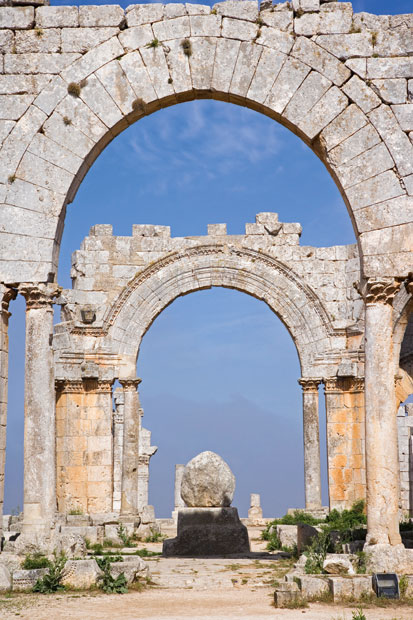Nearly 50 years ago we made our way into an inner place, a semi-subterranean room, in a peculiar college. A smallish, round-faced man was beginning to give tongue. Each week he drew multi-coloured patterns in the air, words flitting about like luminous bats in a night sky. We sat bewitched. There was suspense too, since from time to time a stammer threatened to stop all speech.
He took us back to a world far removed from our own — there was more than a touch of Pullman magic as he made an incision and we crossed into his world. First we found ourselves in the Middle East in an era of war on fronts stretching from the Red Sea to the Caucasus. Key characteristics of the two great powers involved, Byzantium and Sasanian Persia, were identified. The rise of Islam was explained in terms of social malaise in Mecca and exhaustion in the outside world.
A year or two later, we were being pulled gently back into the Mediterranean world between the second and seventh centuries. We were now given a series of glimpses of pagan and Christian thought-worlds as they evolved in the context of a changing social and political order.
Peter Robert Lamont Brown was at the start of a brilliant career. Born to an Anglo-Irish family, he had been brought up in Dublin and schooled at Shrewsbury, like Richard Cobb 20 years earlier, and his juniors by two years, the founders of Private Eye. The undergraduate dubbed the cleverest man in New College had gone on to be nurtured by All Souls as Prize Fellow and Senior Research Fellow.
Something highly unusual was happening. Week by week his audience grew — far beyond the capacity of the room. He might be allusive, hard to follow — but we liked the flow of words and the thrills which they induced, especially the many similes he dropped into our minds. It was essential, when we left the fetid atmosphere generated by so large an audience in so small a space, to create a lacuna in normal life, lasting perhaps another hour, to sift through what we had heard and to pick out the solid propositions which lay beneath the scintillating prose.
The World of Late Antiquity, published in 1971, carefully, copiously and aptly illustrated, captured the essence of those lectures. Peter Brown terms it nothing more than an essay. What an essay, though! Each chapter is an inspired riff on a theme: the new preoccupations of the late second and third centuries, say, which were at odds with traditional polytheism, or the influence exercised by the refined Platonism and traditional culture of the pagan intelligentsia on Christian leaders, the effect, likened to a lightning flash from a charged cloud, of the simple, brutal ascetism introduced into the Mediterranean world by St Antony. Brown’s genius — and he has genius — lies in his ability to catch the thoughts and half-articulated assumptions of all manner of human beings living in an alien world. He is a magician of the imaginaire.

As for the more humdrum phenomena of political and social history, he had much that was novel, interesting and persuasive to say, together with observations that strike the learned now as misguided or glib. The dynamic of a riff, a happy phrase, a cross-cultural comparison or an image could lead him astray. But again and again he hit on points of crucial importance — the many functions of the mandarinate in Byzantium, for example, or the estrangement of the Germanic governing elite from the Romanised population in most of the post-Roman West.
The Folio Society has reissued this early essay of his in a fine edition with numerous colour plates. The introduction by Christopher Kelly summarises a career, in the United States since 1978, which has made him the patron of Late Antique studies all over the world. His subsequent publications delve into many subjects touched on in The World of Late Antiquity. Very few historians can match his ability to enter other minds. As Frances Yates was to the Renaissance and Isaiah Berlin to the Russian intelligentsia in the 19th century, so is Guru Brown to the great philosophers and church leaders of Late Antiquity.
Of all of his books I would single out The Body and Society (a.k.a. Sex and the City), an extraordinarily entertaining exposition of varied views on the carnal. What Brown likens to the action of an espresso machine is placed in the context of the providential history of mankind and a cosmos, where the same fire lights up the human body and the stars.
Available from www.foliosociety.com






Comments